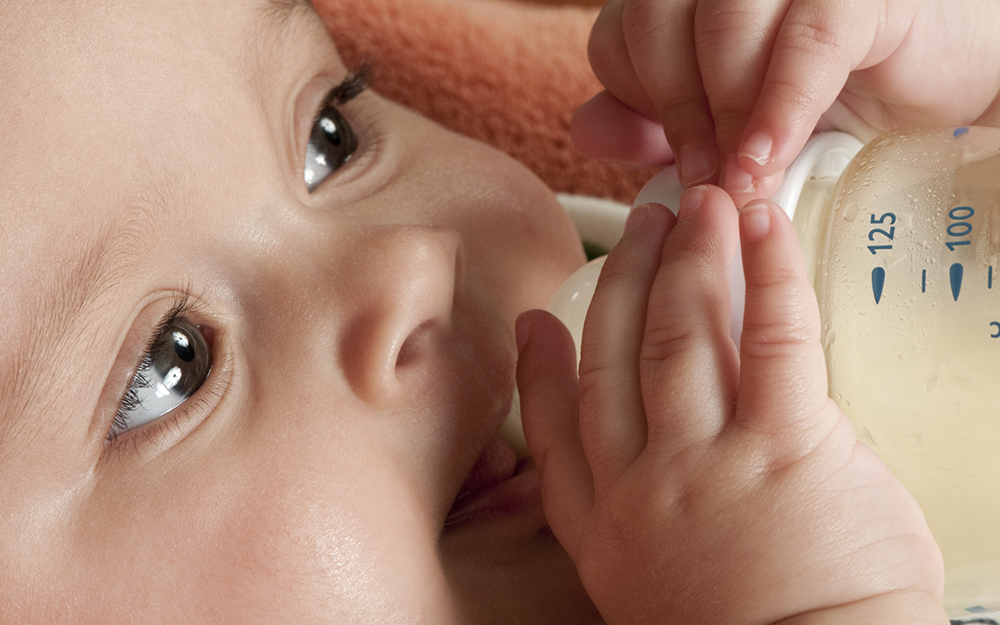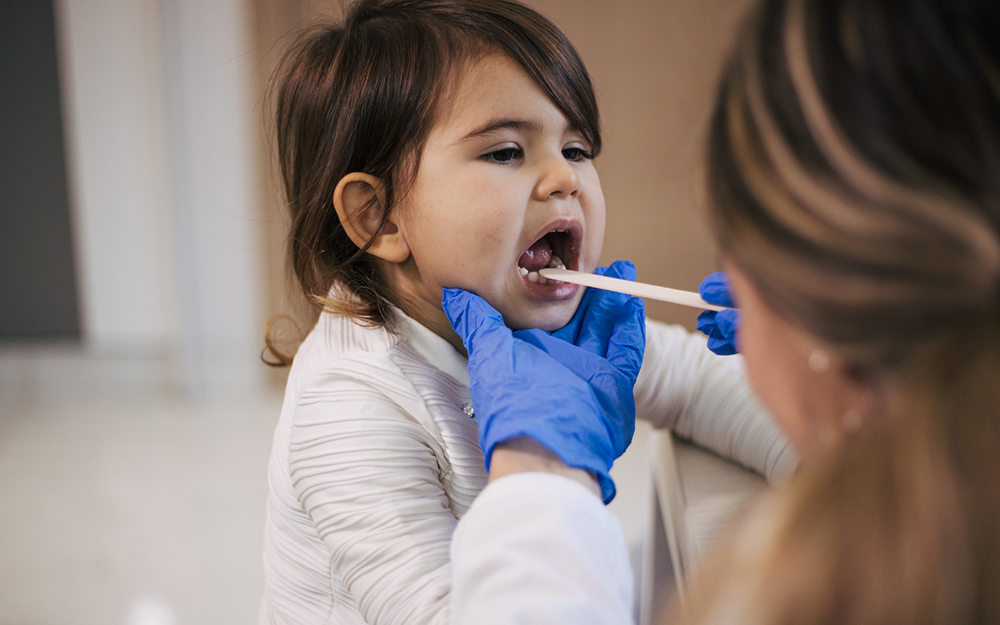What to Know About Celiac Disease in Children
Date
September 14, 2022
Credits

Date
September 14, 2022
Credits
Medical providers featured in this article
In Brief
{{cta-block}}
The signs might be subtle: You notice your child seems to always get stomachaches after eating toast or pasta. Maybe your daughter has recurring bouts of constipation, or your son is growing much slower than his classmates.
You start to suspect that your child has something worth asking your pediatrician about. That something just might be celiac disease.
Celiac disease is caused by an abnormal immune response to gluten—a protein found in wheat, rye and barley. It damages the lining of the small intestine and makes it hard to absorb nutrients. As a result, children with celiac disease may not get the nourishment they need to grow and thrive.
The condition requires lifelong care. If left untreated, it can lead to delayed growth and even thin bones and fractures.
Celiac disease affects 1 in 300 children in the United States. That number rises to 1 in 10 for children with a parent or sibling who has the disease.
“It’s important to ensure your child gets all the calories and nutrients they need. Celiac disease damages the lining of the intestine, so your child may not be able to absorb certain key nutrients, such as iron.”
Symptoms can appear in children as young as 6-9 months old, or whenever gluten-containing foods are introduced to a child’s diet.
Infants and toddlers may experience vomiting, irritability or poor growth, while school-age children tend to have stomachaches, constipation or diarrhea. Older kids and teens may experience chronic fatigue, headaches, joint pain, rashes and even mood disorders.
“Sometimes the patient’s symptoms are significant and you know there’s something wrong,” says Erin Feldman, a pediatric dietitian with the Cedars-Sinai Pediatric Digestive Diseases Clinic.
“Other times there are no symptoms, but a routine blood test reveals anemia, and the follow-up blood work shows the patient has celiac disease.”
Still, Erin warns, celiac disease may not be the cause of your child’s symptoms. Other culprits, such as a wheat allergy or gluten intolerance (a sensitivity to gluten that does not damage the intestines) might be to blame.
So, how can you tell if your child has celiac disease or something else? We asked Erin to guide parents through the basics of this potentially serious pediatric condition.
What’s the difference between celiac disease and gluten intolerance or a wheat allergy?
Erin Feldman: The symptoms can be very similar. Obviously, if someone has an allergy or intolerance, they could have a stomachache or bloating or diarrhea. But so can someone with celiac disease. How you diagnose and treat them is what’s different.
If you have a wheat allergy, you’re allergic to one of the proteins in wheat, but you can still eat rye and barley.
People who are sensitive to gluten may have a stomachache or other symptoms after eating gluten-containing food, but they may be able to tolerate a small amount.
When you have celiac disease, you must avoid all gluten.
How is celiac disease diagnosed?
EF: The first step is to do a blood test to check for an antibody called tissue transglutaminase IgA, or tTG-IgA. If the results show an elevated tTG-IgA level, that’s a red flag that your child may have celiac disease.
A gastroenterologist will confirm the diagnosis using an endoscopy (a procedure where they insert a small, flexible tube through the mouth and down the esophagus into the stomach and small intestine). They will obtain a biopsy (a small tissue sample) of the intestine to see if there are any signs of celiac disease.
How is it treated?
EF: When your child has celiac disease, the treatment is avoiding gluten 100%. That means avoiding any foods that contain wheat, rye or barley. It’s also important to meet with a dietitian to go over your child’s nutritional intake and get individualized guidance and education.
Why should I work with a dietitian?
EF: A dietitian can help you and your child with things like reading food labels, dealing with school meals, eating out and avoiding hidden sources of gluten.
They also can help find substitutions for your child’s favorite foods and suggest ways to prepare meals so your child’s new gluten-free diet isn’t that different from their previous one. The dietitian can provide recommendations based on your child’s likes, dislikes and even cultural food preferences.
Also, it’s important to ensure your child gets all the calories and nutrients they need. Celiac disease damages the lining of the intestine, so your child may not be able to absorb certain key nutrients, such as iron. A dietitian can recommend a gluten-free multivitamin with iron.
Once you remove gluten from your child’s diet, the gut heals and it can absorb nutrients from food again.
Dietitians also can help you avoid cross-contamination from gluten-containing foods in the home and when eating out. For example, you’d think that french fries are gluten free. But if they’re cooked in the same fryer as breaded chicken tenders, you’ve just introduced gluten into the french fries.
What should I do if I think my child has celiac disease?
EF: Go to your pediatrician and get the screening lab tests done to confirm or rule out celiac disease and wheat allergy, if there is a concern. There is no test for gluten sensitivity.
Don’t cut out any foods yet, because that can affect the antibody test results and introduce an unnecessary food restriction.
Typically, the pediatrician refers patients to a gastroenterologist to make the diagnosis. Whether it’s celiac disease or a wheat allergy, they should refer you to a dietitian.
At Cedars-Sinai, we have a unique center with doctors, nurse practitioners, dietitians, social workers and a whole team of people all in one place. So, when a child is diagnosed with celiac disease, the doctor asks me to step in and educate the parents and family right at the time of diagnosis.
Gluten-free tips
1. Cross-contamination in oats is common. Check the label on oatmeal and other oat-containing foods to ensure they are certified gluten free.
2. Ask your pharmacist about your child’s medications and nutritional supplements. If they contain gluten, get recommendations for gluten-free alternatives.
3. Check labels on lip balms. These products can be hidden sources of gluten.
4. Gluten-free bread and bagels need their own toaster slot. If you don't have room for two toasters, designate and label one slot on your toaster for your gluten-free items.
5. Give your child's teacher a variety of nonperishable gluten-free snacks and treats to offer your child whenever there is an activity or party that involves gluten-containing foods. The teacher and your child will thank you.





